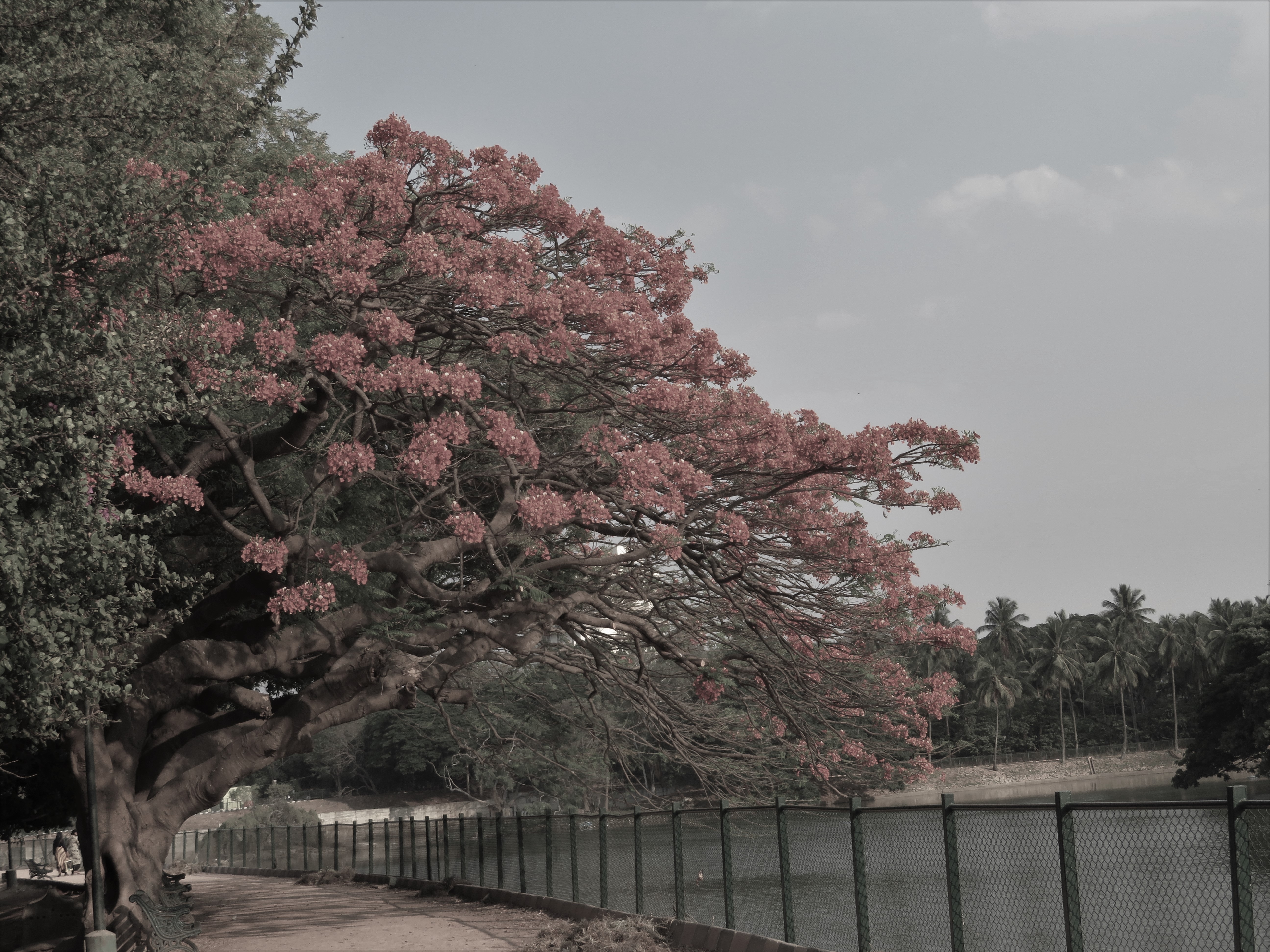Subtle associations, the nature aesthetic, the sublime
moment of awareness: I was grappling with Haiku.
There was no starting point. Not here, in the morass of
the city. To even acknowledge the want of the rain is
to know smog-blackened dreams, the wretched lust
of the mundane inside an unrequited morning, human
refuse, refused humans, stained sky, bubbling sores, lies
leading to lies, streets leading to streets leading fucking
nowhere. There was little to exalt. Little that could exalt.
Hope (or something darkly wishful) came in the minutes
before dawn, when the night slipped into the silence
between squirrel and crowsong. The secret to survival is
not seeing, not feeling, not counting. But poetry that
wants solitude and beauty cannot sprout in yellow
streetlight. We learn from fear to move away from the
path of a stranger, at night. We learn to tune out the
clamour by whispering, by shrinking, by unlearning sound.
We learn not to fall in love by falling, by breaking, by
practice. We learn not to grieve from unrelenting physics,
from concrete sunsets, from the weight of the unsaid. We
learn to live by waiting: for summer, for the monsoon, for
the monsoon to end, for gulmohars to bleed again: another
puddle — / another stray dog / takes one step on the moon

something odd is happening here. I cannot enter my thoughts
LikeLike
In the comments section?
LikeLike
This is so well done, I could really feel the dystopia of a crowded city, we can only exist and wish for something else (in time or in space)
LikeLike
Thank you, Bjorn. I think micropoetry (not calling it haiku) from a urban space needs its own genre… so much to say and in a totally different rhythm.
LikeLike
You capture the turmoil of a city so well. I resonate with the line “we learn to live by waiting.” That we do.
LikeLike
Thank you, Sherry.
LikeLike
I feel as though I’ve been let deep into another mind.
LikeLike
Thank you, Rosemary… in a strange way I feel that way about my own mind too… that it is letting me in… one centimetre at a time!
LikeLiked by 1 person
Wow. I can only imagine. The secret to survival is not to see or speak. Everything a poet does.
LikeLike
It’s best to let the feelings dictate the form. You fit the claustrophobia of the city well here.
LikeLike
Thank you, Rommy.
LikeLike
This is incredibly beautiful … deeply moving. I love how you described that time between squirrel and crowsong.
LikeLike
Thanks so much, Helen.
LikeLike
The wholeness of this piece is a masterpiece painting that expresses a grim corner of our thoughts where survival becomes robotic.
LikeLike
Thank you, Maria. Much appreciated.
LikeLike
“We
learn to live by waiting: for summer, for the monsoon, for
the monsoon to end, for gulmohars to bleed again: another
puddle — / another stray dog / takes one step on the moon”
I love this so much… what it says about living, and understanding the act.
LikeLike
Thanks so much, Magaly.
LikeLiked by 1 person
Ouch! Urban despair, the depression-like feeling induced merely and entirely by spending too much time in urban conditions, really comes through this one. I remember the cosmonaut dog Laika, and that she didn’t survive, but was she able to make a puddle on the moon?
LikeLike
Wouldn’t it be wonderful if it would rain every morning! My first year or two living in El Paso on the foothill of Mount Franklin, I would look out in the mornings to the valley down in the heart of town, all yellow hovering over them. The “fog” was yellow from the stuff coming out of the refineries’ chimneys. Things changed; clean air came into those clouds instead of fines. Came government regulation. Nice reading, tells like it is.
..
LikeLike
your haiku that ends the poem is really stunning. Breathtaking! Not to say it takes anything away from the so gritty imagery of the prose.
LikeLike
Thanks so much, Lee San. So glad it worked. It took a while to get free of the traditional images of classical haiku and just write what I was observing and experiencing.. whether it could be called haiku or not.
LikeLike
yes, observing (and paying attention to details) and experiencing, that’s where good haiku comes from. Yours is still about nature : animal, water, sky, so definitely it’s haiku. Senryu is concerned with human nature. Modern English haiku do not stick to the strict 5-7-5 syllable count. Boy, am I a bit long-winded. 🙂
LikeLike
Thank you, Lee San. I suppose urban micropoetry could eventually become a different genre – centred around the dystopia of modern cities! 🙂
LikeLike
So much packed in this passionate and spot-on poem.
LikeLike
Thank you, Khaya 🙂
LikeLike